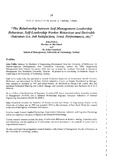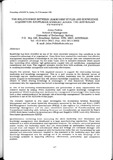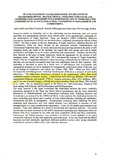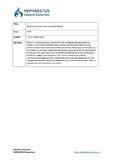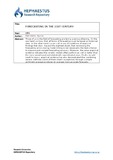Search
Now showing items 21-26 of 26
The Relationship between Self-Management Leadership Behaviour, Self-Leadership Worker Behaviour and Desirable Outcomes (i.e. Job Satisfaction, Trust, Performance, etc)
(Global Network, 1998)
Self-managing teams hold a great interest for contemporary researchers and practitioners. There is an extensive literature which argues that such groups often exhibit high performance coupled with job satisfaction and ...
The relationship between leadership styles and knowledge aquisition: knowledge-enabled leader. The Australian experience
(UTS, University of Technology Sydney, 1999)
Knowledge has been identified as one of the most important resources that contribute to the
competitive advantage of an organisation. Many firms have reached the conclusion that effective
management (acquisition) of ...
Self management leader behaviour: its relations to transformational, transactional, iniating structure and consideration leadership style dimensions, and to work related attitudes such as job satisfaction, confidence in management and commitment
(ANZAM, Australian and New Zealand Academy of Management, 1998-12)
Numerous studies on leadership and on the relationship between leadership style and various
individual and organisational outcomes have utilised either of two questionnaire instruments for
the measurement of leader ...
What can we learn from corporate failure?
(Elsevier, 1991)
Failure is a natural process, observed in both biological and organizational systems. In this article different types of failure are illustrated and the most common factors that contribute to failure described. Delaying ...
Forecasting in the 21st century
(International Journal of Forecasting, 1991)
Those of us in the field of forecasting are facing a serious dilemma. On the one hand we know that
all forms of forecasting must be based on historical data, on the other hand we are well aware of a
plethora of empirical ...
Regional development and non-material public infrastructure
(Blackwell Publishers Ltd, 1997)
The aim of this paper is to investigate the conditions under which public investment can be allocated to the infrastructure in material and non-material capital so as to have a positive effect on regional development and ...

